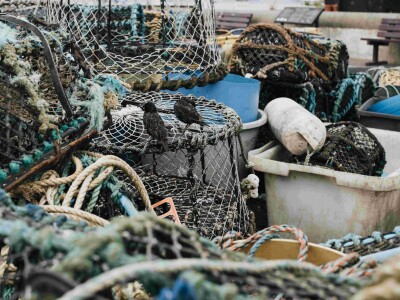Lobsters attacking and eating one another, especially in captivity, is nothing new, but a University of Maine marine biology student says these days, lobsters are more likely to be killed and eaten by one another than by any other predator.
In a report by the international climate journalism project Climate Desk, UMaine student Noah Oppenheim says he attaches a waterproof, infrared camera to young lobsters and drops them to the sea floor to see who would come out to eat it. The answer: Lobsters, more than 90 percent of the time.
The report says that the warmer waters in recent years, along with overfishing of lobsters’ natural predators, have made lobsters grow larger and produce more offspring. Lobstermen have noticed the difference, as haul sizes have increased and the price of lobster has dropped.
Read the full story at Bangor Daily News>>






